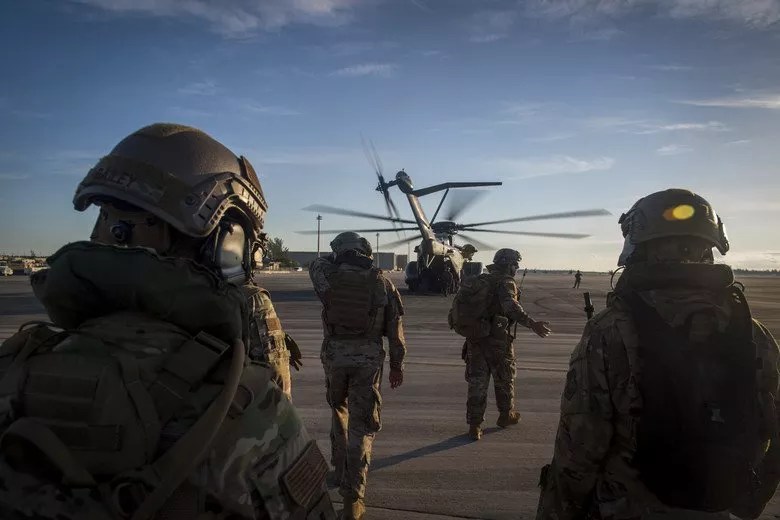
Photo by U.S. Air Force

Audio By Carbonatix
Veterans Day commemorates the end of World War I, when the guns fell silent across the Western Front at the 11th hour of the 11th day of the 11th month. Since that time, average global temperatures have increased by an average of 1.5 degrees – and experts say that’s no doubt affecting today’s U.S. military operations.
This morning, the Union of Concerned Scientists published an interactive map identifying the U.S. military bases most at risk of extreme heat in the next century. Scientists predict those military bases will weather an additional month on average of “dangerously hot days” – where the heat index soars into the triple figures – by midcentury. But service members stationed in Florida can expect a helluva lot more heat.
The four military bases expected to be most affected are Homestead Air Reserve Base outside Miami, which can expect 102 more extreme-heat days; MacDill Air Force Base in Tampa, with 96 more extreme-heat days; Corry Station at Naval Air Station Pensacola, with 78 more extreme-heat days; and Outlying Field Bronson at Naval Air Station Pensacola, with 77 more extreme-heat days.
US military bases are facing potentially staggering expansion of #ExtremeHeat in coming decades. Our new interactive map highlights how many more days above 100°F degrees bases may face if we don't boldly #ActOnClimate. #VeteransDay.
— Union of Concerned Scientists (@UCSUSA) November 11, 2019
Map on our website: https://t.co/sjc4WUjvGt pic.twitter.com/Cpor9JSTSv
Will you step up to support New Times this year?
At New Times, we’re small and scrappy — and we make the most of every dollar from our supporters. Right now, we’re $18,000 away from reaching our December 31 goal of $30,000. If you’ve ever learned something new, stayed informed, or felt more connected because of New Times, now’s the time to give back.
Climate change is already making U.S. troops sick: A Pentagon report released last year showed a year-over-year increase in service members suffering from illnesses such as heatstroke and heat exhaustion. In 2018, there were 578 diagnoses of heatstroke and 2,214 incidents of heat exhaustion in the U.S. military, with 90 percent of incidents occurring on American soil.
Heat-related illnesses are the number one climate killer in the world. Heat exhaustion can cause nausea, headache, and fatigue when the human body temperature reaches 100.5 degrees Fahrenheit. At 104 degrees, heatstroke can lead to organ failure and death.
“Although numerous effective countermeasures are available, heat-related illness remains a significant threat to the health and operational effectiveness of military members and their units and accounts for considerable morbidity, particularly during recruit training in the U.S. military,” the Pentagon study concluded.
A congressionally mandated report issued by the Department of Defense at the beginning of this year details how military installations in the United States are vulnerable to climate change. The Florida Panhandle’s U.S. Air Force Base Tyndall didn’t regain operating status for a month after Hurricane Michael damaged nearly every structure, and the U.S. Southern Command in Doral experiences recurrent flooding, according to the report. Cape Canaveral Air Force Station, Eglin Air Force Base, MacDill Air Force Base, Patrick Air Force Base, and Naval Air Station Key West are also considered vulnerable to extreme weather events such as flooding or wildfire.